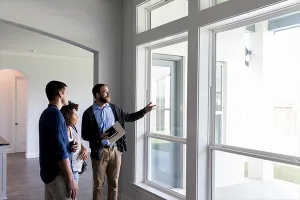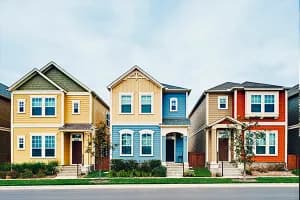
As we find ourselves more deeply embedded in the digital age, it’s exciting to see how technology is reshaping the way we interact with our homes. As home efficiency and green living continue to trend upward, smart home features meet the demand homeowners seek. These five technology advancements make a home more convenient and more efficient, speaking loud and clear to those who want to optimize the comfort of their home while reducing their carbon footprint:
Smart Thermostats
Let’s start with one of the most-adopted components: the smart thermostat. This device is the peak of intuitive design, offering a level of control and efficiency that goes far beyond what we thought possible when central heat and air was invented. Smart thermostats adjust the temperature based on our daily habits, ensuring comfort while minimizing energy use.
Further, their remote control aspect means homeowners can access them from anywhere in the world. Savings on energy bills are often substantial, and the positive environmental impact is a win-win result.
Smart Lighting
The intelligence of our homes doesn’t stop at temperature control. Smart lighting gives homeowners power over ambiance and energy consumption. These systems, which use smartphone apps or voice commands, let homeowners easily adjust lighting to suit their mood, the time of day, or specific tasks. More importantly, they significantly reduce energy waste, as lights can be automatically turned off when no one is in the room. Plus, smart lighting systems often utilize LED bulbs, which consume far less energy than their traditional counterparts.
Smart Shades
These nifty installations offer a seamless blend of comfort, efficiency and style. Some automatically adjust throughout the day, tracking the sun to optimize natural light and heat gain in a room or home. Others have the option to set a timer to lower shades at specific times, which also helps keep a home at a comfortable and efficient temperature. These shades are particularly advantageous for hard-to-reach windows, since they can be controlled remotely.
Smart Irrigation
Efficiency in smart home tech isn’t important only inside the home. Smart irrigation systems ensure the yard gets the attention it needs. These systems are far superior to traditional sprinkler timers, taking into account real-time weather conditions to avoid unnecessary watering. Sensors that come with complete systems or that can be added to existing systems also reduce water use by watering based on plants’ needs rather than a set timer. These key features not only save a significant amount of water but also ensure optimal plant health.
Smart Energy Meters
Innovative products like the Sense energy monitor are the unsung heroes of home efficiency. These devices provide real-time insights into your home’s energy usage by monitoring electricity consumption at the appliance level. With this knowledge, homeowners can identify energy-hogging appliances or unusual power consumption patterns. These insights help homeowners make informed decisions about energy usage, leading to potentially significant savings and a smaller carbon footprint.
Investing in smart home technology isn’t just about convenience; it’s about creating a sustainable living environment that makes the most of our resources. The benefits are compelling: reduced energy consumption, cost savings, and enhanced comfort. The transition to smart home technology isn’t merely a trend. It’s a meaningful step toward sustainability, one that we as real estate professionals should not only be aware of, but actively promote to our clients.
Understanding these benefits and communicating them to your clients can provide a significant competitive edge. And for the homeowner, the advantages of smart home technology make the initial investment well worth it, adding not only to the value of the property but also to the quality of life within it.









